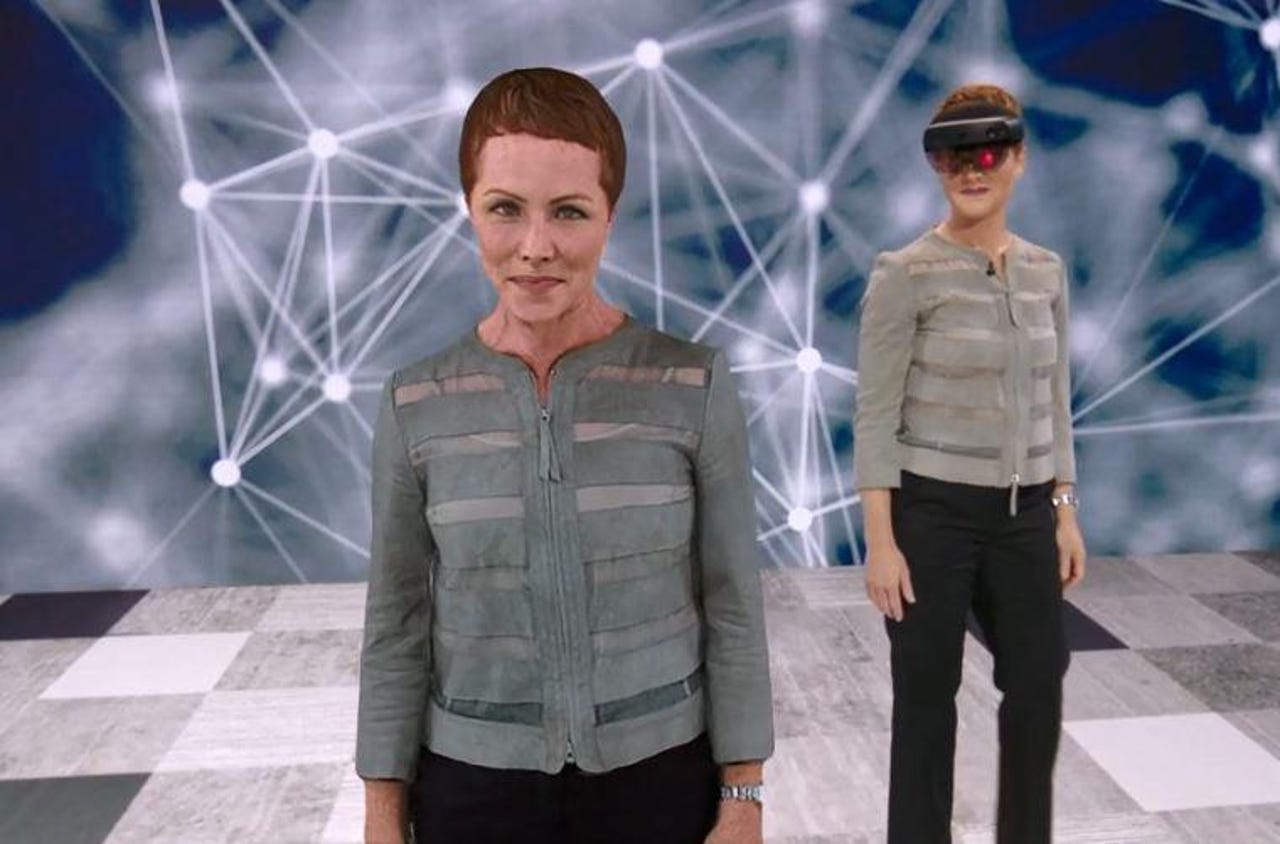Microsoft's latest holoportation demo shows off its mixed reality, AI, translation technologies


More Microsoft
Microsoft is continuing to pitch the promises of its mixed reality technology in the workplace. In a new demonstration, officials showed off a scenario where a life-sized holographic representation of a person could be beamed into a scenario with real-time simultaneous language translation happening -- a communication scenario in which Microsoft has been working for years.
At Microsoft's Inspire partner show (which is co-located with its Ready sales kick-off event) on July 17, Microsoft demonstrated such a scenario on stage during CEO Satya Nadella's keynote. Azure Corporate Vice President Julia White donned a HoloLens 2 headset and generated a full-size hologram of herself translated simultaneously into Japanese and maintaining her speech cadence and patterns.
SEE: Mixed reality in business (ZDNet/TechRepublic special feature) | Download the free PDF version (TechRepublic)
Microsoft pulled off the demo by combining a number of its existing technologies, White said, including Azure speech-to-text, Azure Speech Translation, and neural text-to-speech. The text-to-speech from Azure Speech Services allows apps, tools, and devices to convert text into natural human-like synthesized speech. Users can create their custom voice unique to them. Update: A Microsoft spokesperson said the life-size hologram of White was created at Microsoft's Mixed Reality Capture Studios.
Holoportation allows individuals with mixed-reality devices, including the HoloLens, to see and interact with remote participants in 3D as if they were present in their physical space. Microsoft researchers have been working on Holoportation in various incarnations, over the past several years.
This wasn't the first time Microsoft demonstrated holographic technology during its Inspire/Ready events. Last year in Las Vegas, Microsoft showed off a demo of the future of work which included the HoloBeam holographic telepresence technology from Valorem, one of Microsoft's Mixed Reality Agency partners. (Microsoft didn't mention Valorem today, so I assume Valorem's technology was not part of White's demo.)
In 2016, a team of Microsoft researchers and some members of its original Surface Hub unit who had been working on Microsoft's Holoportation project left the company to create a new company called perceptiveIO. Last year, a number of those perceptiveIO employees joined Google, and Google took control of the perceptiveIO domain.
In 2017, Microsoft bought AltSpaceVR, a "social virtual reality" vendor. This acquisition may figure into the "immersive communications"/teleportation component of Microsoft's mixed-reality strategy going forward, though Microsoft officials didn't mention that technology at all during today's demo.
I've asked Microsoft if there are more technical details available about the holoportation demo shown today. So far, no word back.